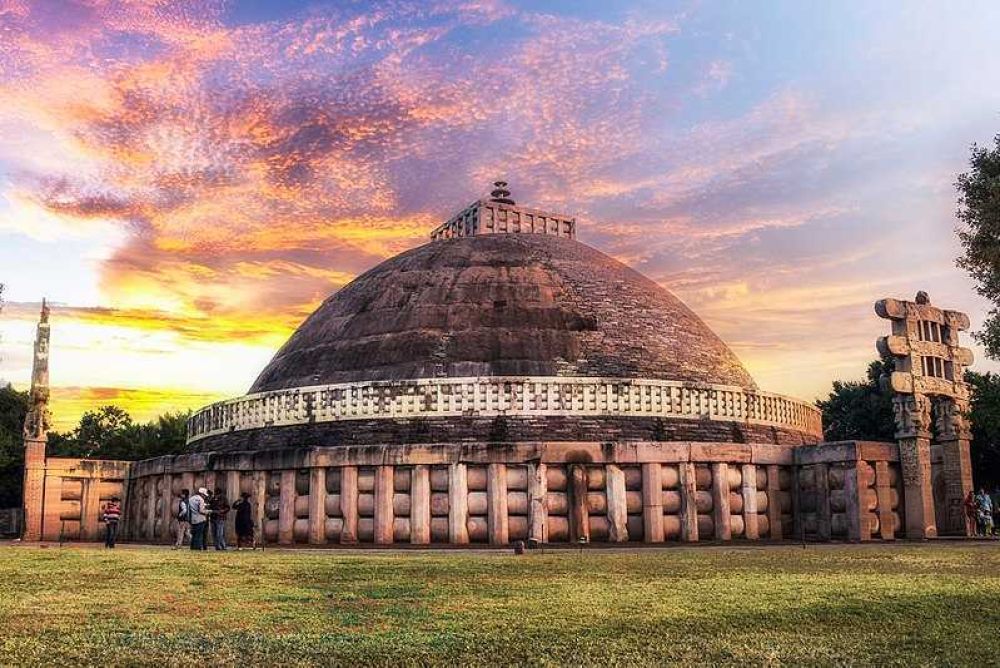

Sanchi, situated in the Indian state of Madhya Pradesh, is known worldwide for its ancient Buddhist monuments. The history of tourism in Sanchi is intrinsically linked to the history of its monuments, which date back to the Mauryan period (3rd century BCE). Sanchi houses the oldest stone structure in India - the Great Stupa, constructed by Emperor Ashoka. Over centuries, this region has attracted pilgrims, historians, and tourists interested in Buddhist culture and architecture.
In ancient times, Sanchi served as an important pilgrimage site for Buddhist monks and devotees who travelled from various parts of Asia. The location grew in importance as trade and the spread of Buddhist teachings flourished throughout the continent. However, with the decline of Buddhism in India around the 12th century, Sanchi's monuments fell into disrepair and the site became largely forgotten.
The modern history of tourism in Sanchi began in the early 19th century when General Taylor rediscovered the site in 1818, during the British colonial era. It gained the attention of archaeologists like Sir Alexander Cunningham who undertook restoration work. With increasing colonial interest, Sanchi's monuments were systematically studied, restored, and conserved.
By the 20th century, Sanchi was recognized as an invaluable artefact of human history, and more visitors from around the globe started arriving, making it an essential stop on the South Asian Buddhist pilgrimage and cultural tourism circuit.
In 1989, the significance of Sanchi was internationally recognized when it was designated a UNESCO World Heritage Site. This spurred a systematic approach to its conservation and management, further fostering tourism development in the region. Sanchi's Stupas, monolithic pillars, temples, monasteries, and sculptures manifest the harmonious spread of Buddhism in India and attract both religious and secular tourists interested in the rich tapestry of India’s spiritual history.
Currently, tourism in Sanchi is witnessing a blend of historical curiosity and digital innovation. With the rise of experiential travel, tourists are seeking immersive experiences, which has led to local guided tours that provide deep dives into the history of Buddhism and the monument's architectural nuances.
The Madhya Pradesh Tourism Board has also embraced digital platforms for promoting Sanchi, including virtual tours, on-site augmented reality experiences, and digital information kiosks, making the site more accessible to a tech-savvy generation while also preserving its history for future visitors.
There is also a growing trend toward sustainable tourism in Sanchi. Efforts are being made to minimize the ecological footprint of tourism by maintaining the site's integrity and ensuring the well-being of the local communities. This includes promoting eco-friendly practices and supporting small businesses and handicrafts that reflect the region's cultural heritage.
In conclusion, the history of tourism in Sanchi is as layered and intricate as the carvings on its stupas. From an ancient pilgrimage site to a neglected ruin, and from a rediscovered archaeological gem to a UNESCO World Heritage Site, Sanchi continues to evolve as a destination that respects its past while adapting to the needs of the modern traveler.